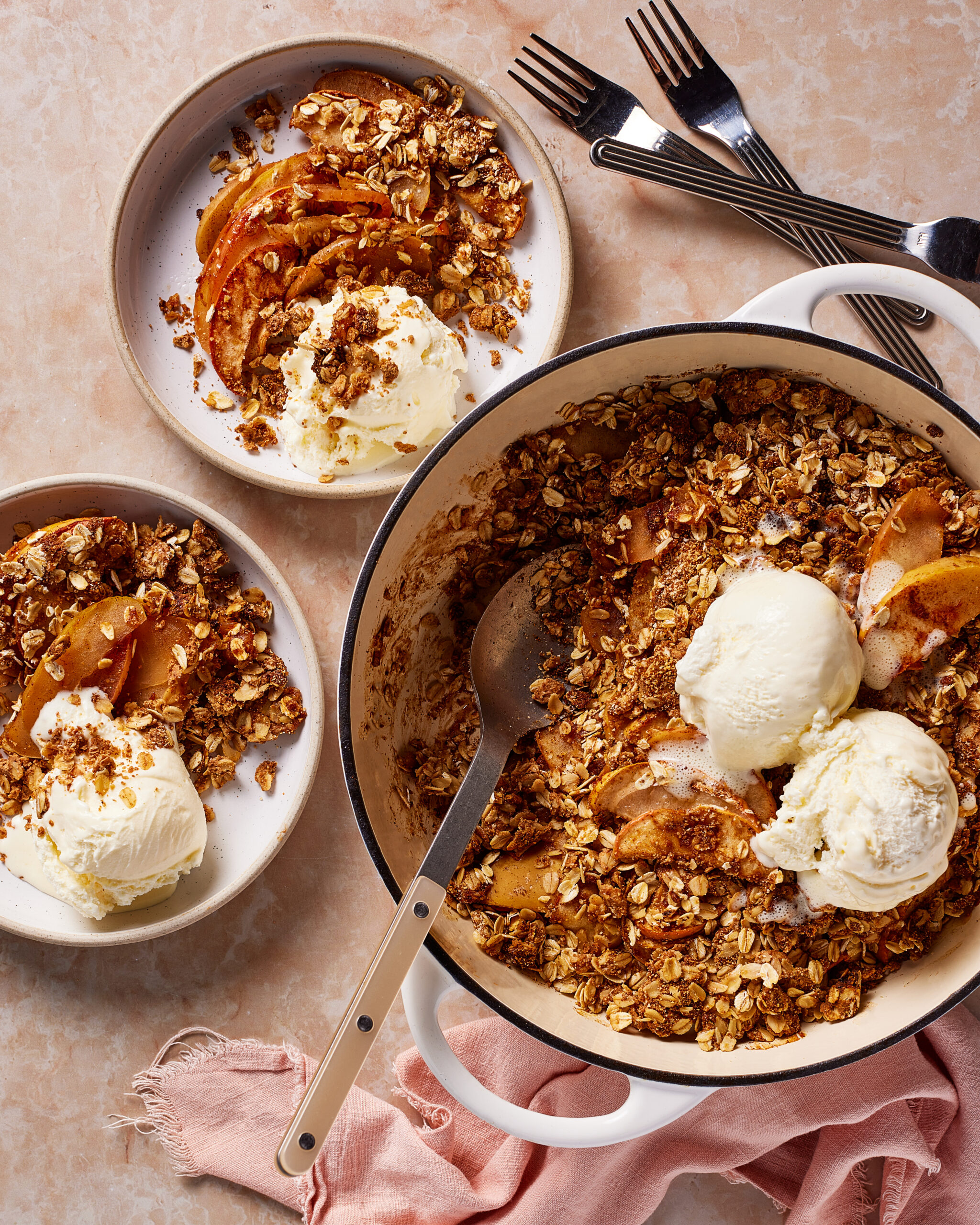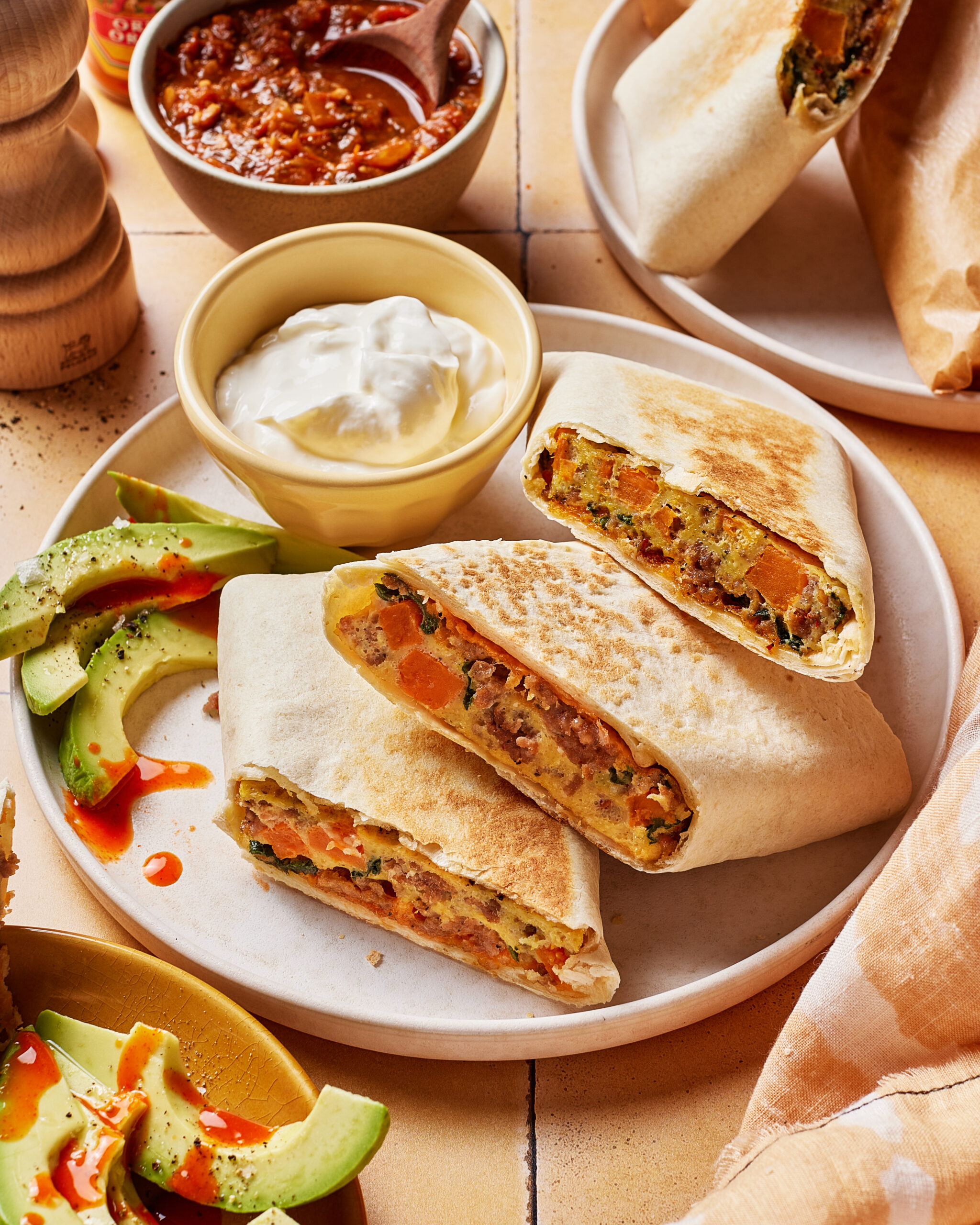recipes
lifestyle
wellness
motherhood
mindset
About
E-Books
Blog
Freebies
partnerships
hi, i'm lauren!
hey there!
I’m on a hot mission to help you balance your hormones & live your best life.
categories
Home
Quiz
Get In Touch
The Course
search:
Cookbook
Recipe key
GF
VG
P
Vegan
Gluten Free
Paleo
DF
Dairy-Free
download now
Join Hormone Healthy Eats!
Become a SFNSG insider to get my monthly Substack, Hormone Healthy Eats! Packed with the latest hormone-healthy recipes
+ tips.
jump to recipe >
If you’re a woman in your reproductive years, your body goes through four distinct hormonal fluctuations every month (also known as the four phases of your menstrual cycle).
These changes affect literally everything else going on in our bodily systems and biology, from our energy levels to our metabolism to our body temperature and brain function — and each shift relies on specific macro and micronutrients to support it.
This is why food is such a powerful tool, as it not only powers hormone production and regulation, but can make all the difference in how we feel and experience each phase of our menstrual cycle as a result, ultimately helping us mitigate and completely reverse hormonal imbalance symptoms such as pms, period pain, fertility challenges, weight gain, bloat, fatigue and acne.
While eating a wide variety of nutrients to support each phase of the menstrual cycle is important, in this post we’re focusing on the luteal phase, the 1-2 weeks leading up to your period. If you do have a hormonal imbalance, this tends to be the time when most symptoms crop up, so eating foods to support your hormones during this time can be incredibly helpful at reducing symptoms.
Below you’ll find the most delicious and beneficial luteal phase foods grocery shopping list with ingredient and meal ideas to help you naturally balance your hormones and feel your best. Snag all of the details below!
Want more delicious recipes for each phase of your cycle? Check out my best-selling 28 Day Plan!
WHAT IS THE LUTEAL PHASE?
The luteal phase is one of the four phases of a menstrual cycle. It typically lasts 12-16 days and occurs immediately after ovulation, when reproductive hormones estrogen, testosterone and LH begin their decline and progesterone rises to stimulate the growth of the uterine lining in preparation for a potential pregnancy (if not pregnant it will shed in the next phase, menstruation).
WHAT HAPPENS TO HORMONES DURING YOUR LUTEAL PHASE
Emotionally during the first half of the luteal phase, you’re still riding high off of the effects of the ovulatory phase. However, as progesterone production increases, you’ll find yourself starting to wind down and a strong desire to complete tasks and get things done (much like the transition from summer to fall).Your brain is also hyperaware of details, causing you to notice things you may have overlooked previously.
The rise in progesterone also stimulates your appetite and increases your body temperature and metabolic rate, requiring an increase in calories (about 200-300 calories per day) and potentially inducing all of those cravings!
Additionally, your immune system downshifts and stress response heightens during this time, as nature’s way of helping you protect a fertilized egg in the event you’re pregnant. This means you’re more susceptible to colds and sensitive to stressful situations, making it a crucial time to slow down, focus on self-care and incorporate plenty of nutrients/immunity boosting foods.
HEALTH BENEFITS OF EATING FOR YOUR LUTEAL PHASE
Luckily, one of the best ways we can combat hormonal imbalances and symptoms during the luteal phase is through food, especially by eating enough of certain nutrients to support progesterone production, stabilize blood sugar, improve digestion, boost our mood and curb cravings. When we do this, we naturally support healthy hormone levels, which can lead to benefits in the luteal phase including:
-
+ Reduced PMS
-
+ Stable Energy & Mood
-
+ Reduced Bloating/Water Retention
-
+ Improved Digestion/Regularity
-
+ Less Painful Periods
-
+ Optimal Fertility/Lengthened Luteal Phase
-
+ Boosted Immune System
-
+ Cycle Regularity
-
+ Improved Sleep Quality
-
+ Less Breakouts/Hormonal Acne
-
+ Optimal Metabolism/Less Fat Storage
LUTEAL PHASE FOODS GROCERY LIST
Due to the hormonal fluctuations that take place during this phase, it’s important to consume plenty of nutrients that support progesterone production, stable blood sugar levels, optimal digestion and healthy mood and brain function. See below for ideal luteal phase ingredients to incorporate into your meals for reduced symptoms and hormone balance.
PLANTS (FRUITS + VEGGIES)
During your luteal phase the increase in progesterone naturally slows digestion (hello bloat/constipation!). Thus it’s important to eat plenty of fiber-rich fruits and vegetables, which support large intestine functionality and increase transit time, leading to regular bowel movements. Additionally, cooking and cooling some of the starchier vegetables such as squash, sweet potatoes and potatoes creates a type of prebiotic fiber known as resistant starch, which works to protect against inflammation and intestinal permeability (i.e. leaky gut). My favorite fiber-rich plants to include during this phase are:
-
+ Cabbage
-
+ Cauliflower
-
+ Celery
-
+ Cucumber
-
+ Collard Greens
-
+ Mustard Greens
-
+ Parsnip
-
+ Pumpkin
-
+ Radish
- + Squash
-
+ Sweet Potato
-
+ Potato
-
+ Carrot
-
+ Apple
-
+ Peach
-
+ Pear
-
+ Banana
FRIDGE/FREEZER ITEMS
This section is a bit of a hodge podge of foods I like to store in my fridge and freezer during the luteal phase for a variety of reasons. Tart Cherry Juice can help with melatonin production and sleep quality, which can take a hit during this phase if progesterone is too low, while frozen cauliflower and squash are fiber-rich options to add to smoothies. Greek yogurt and fermented foods like kefir, miso, sauerkraut and olives provide gut-boosting probiotics, while cottage and ricotta cheese are rich in B vitamins that support progesterone production. Bone broth is rich in minerals that work to reduce fluid retention and bloat, while coconut water is an excellent source of potassium to make adrenal/cortisol cocktails. And I just love having tortillas on hand for an easy breakfast, lunch or dinner taco situation.
-
+ Tart Cherry Juice
-
+ Frozen Cauliflower
-
+ Frozen Butternut Squash
-
+ Full Fat Greek/Coconut Yogurt
-
+ Organic Cottage/Ricotta Cheese
-
+ Organic Kefir
-
+ Bone Broth
-
+ Sauerkraut
-
+ Olives
-
+ Miso
-
+ Coconut Water
-
+ Almond Flour Tortillas
PROTEINS
Consuming enough protein is always important for hormone health, but it can make an especially huge difference during your luteal phase! This is because the increase in progesterone destabilizes blood sugar, meaning the body has a harder time processing insulin, which can lead to higher highs and lower lows, leaving you on a roller coaster of cravings, mood swings, head aches and other symptoms if not properly managed. Because protein is the most satiating and stabilizing macronutrient when it comes to blood sugar, prioritizing it during each meal and snack can go a LONG way in mitigating PMS, cravings and other common symptoms (not to mention help with weight management!) I like to focus on meat, poultry, eggs and seafood loaded with amino acids and anti-inflammatory omega-3 fatty acids shown to lower prostaglandins (that if elevated can lead to cramping and period pain). Optimal sources include:
-
+ Wild-Caught Salmon
-
+ Canned Wild Tuna
-
+ Pasture-Raised Eggs
-
+ Grass-Fed Beef/Bison
-
+ Liver/Organ Meats
-
+ Sardines/Anchovies
-
+ Organic Ground Turkey
-
+ Wild-Caught Cod/Halibut
-
+ Organic Rotisserie Chicken
-
+ Frozen Chicken Sausage
PANTRY
I love keeping plenty of foods rich in complex carbohydrates (i.e. slow burning carbs) like beans, lentils and gluten-free grains in my pantry during the luteal phase, as they help to regulate serotonin and dopamine levels, working to prevent mood swings, providing your cells with energy and blunting cravings. I also like to focus on mineral-rich foods, especially those high in magnesium (nuts, seeds, dark chocolate, etc.), which regulates blood sugar and muscle and nerve function (i.e. reduces menstrual cramps), as well as improves insulin sensitivity and supports a healthy immune system. I also prioritize electrolytes and salt, which supports energy balance and adrenal health and fluid balance, while reducing pms. Optimal luteal phase pantry items include:
-
+ Chickpeas
-
+ Navy Beans/White Beans
-
+ Buckwheat
-
+ Brown Rice
-
+ Millet
-
+ GF Oats
-
+ Tahini
-
+ Sesame Seeds
-
+ Sunflower Seeds
-
+ Pine Nuts
-
+ Walnuts
-
+ Hemp Seeds
-
+ Chia Seeds
-
+ Protein Powder
-
+ Collagen/Gelatin
-
+ Electrolytes
-
+ Sea Salt
-
+ Cinnamon
-
+ Dates
-
+ Golden Raisins
-
+ Capers
-
+ Prunes
-
+ Grass-Fed Ghee
-
+ EVOO
-
+ Apple Cider Vinegar
-
+ Dark Chocolate/Cacao
HERBS, TEAS + EXTRA
Incorporating herbal teas, digestive bitters and adaptogens into your luteal phase routine can be an extremely effective way to support optimal hormonal balance and reduce or reverse PMS and other cycle symptoms. The specific “whole food supplements” listed below contain vitamins and minerals that work to tone uterine muscles and reduce cramping, promote warmth and circulation to reduce blood clotting, support digestion and clear bloat, and calm the nervous system and stabilize your mood. I recommend purchasing most in looseleaf form to drink as a daily tea or herbal infusion, and using ginger and garlic regularly in your cooking.
-
+ Ginger
-
+ Garlic
-
+ Peppermint Tea
-
+ Spirulina
-
+ Red Raspberry Leaf
-
+ Oatstraw
-
+ Dandelion Root
-
+ Burdock Root
LUTEAL PHASE DIET + EATING TIPS
+ Increase Daily Caloric Intake *If Needed
As mentioned earlier, your resting metabolic rate increases during the luteal phase, naturally burning 10-20% more calories, which is often accompanied by an increase in appetite. If you feel hungrier during this phase, it’s highly encouraged to meet this increased energy expenditure with more food (which also supports metabolism and blood sugar levels, key for a decrease in fat storage and stable weight!) Try adding in a protein-rich snack or two if needed, or increasing the caloric density of your meals with a drizzle of olive oil or sliced avocado, extra large serving of protein, chopped nuts and seeds or an egg, etc.
+ Opt for Warm, Well-Cooked Foods
Progesterone, your calming and relaxing hormone, tends to slooow things down, especially your digestion, by relaxing the muscles in your digestive tract, which can lead to uncomfortable symptoms like constipation and bloat. Cooking most of the foods in this chapter (especially starches and grains, vegetables and fruits, meat and poultry, etc) helps to make them easier to digest and extract nutrients from, working to support large intestine functionality and increase transit time, leading to more regular bowel movements.
+ Don’t Cut Carbs
Slow burning complex carbohydrates help to stabilize blood sugar levels and boost your feel-good neurotransmitter serotonin, which acts as a natural appetite suppressant and mood stabilizer. Opt for the fiber and nutrient-rich options listed paired with a source of high quality protein and fat to prevent a blood sugar spike. *If grains don’t work well for you, as can be the case in those with an autoimmune condition, starchy root vegetables and fruits are great fiber-rich sources.
+ Eat Regularly & Often
Because blood sugar is less stable and resting cortisol levels are higher during your luteal phase, skipping meals or eating irregularly signals to your adrenals to pump out cortisol to compensate for fluctuating blood sugar levels. This means you have more stress hormones circulating in your bloodstream, which can lead to an increase in mood swings, cravings, sleep issues, anxiety and fat storage, to name a few. Focus on eating three consistent, nourishing meals per day, adding in a snack or two if needed.
+ Boost Hydration with Electrolytes + Salt
You know how important it is to drink water regularly, but to maintain proper fluid levels you’ll want to also prioritize electrolytes and salt. These contain essential minerals – sodium, potassium, chloride, calcium and magnesium – that provide a myriad of functions, from supporting energy levels, adrenal health and fluid balance to maintaining the correct plasma volume in your bloodstream to providing adequate stomach acid necessary for the absorption of vitamins and minerals and facilitating protein digestion.
Low salt intake has been associated with a higher risk for PMS, most likely because it triggers the adrenal glands to release a hormone called aldosterone, which leads to fluid and sodium retention. If you experience fluid retention leading during this phase, it’s likely you need to consume more salt, not less. Additionally, insufficient intake of electrolytes like magnesium and calcium have been shown to contribute to cycle issues including cramping, breast tenderness, fluid retention (i.e. bloat) headaches or migraines and mood changes. Drinking plenty of fluids along with consuming hydrating minerals will work to naturally combat these symptoms.
LUTEAL PHASE MEAL IDEAS
Now that you’ve got a luteal phase foods grocery list packed with ingredients to support your hormones and menstrual cycle, you’re gonna need some simple (and delicious!) recipes and meal ideas to help you put it all together. Below are some of my go-to combos to get you started.
+ Stuffed Sweet Potatoes
Everything just tastes better stuffed in a sweet potato IMO! This fiber-rich vegetable adds so much coziness and flavor, and makes a great vehicle for satiating proteins and yummy sauces.
+ Grain Bowls
Grain bowls are extremely versatile and simple to throw together. All you need is a fiber-rich base (quinoa, millet, etc.), roasted or raw veggies, a protein of choice and a delicious sauce to throw it all together. I truly never tire of these!
+ Slow Cooker Meals/Soups
As mentioned above, focusing on warm, slow cooked foods helps with digestion, nutrient absorption and blood flow/circulation during this phase. Plus I love a good slow cooker meal or soup that takes minimal effort to make.
+ Protein Oats
I always crave oats during this phase, which makes sense given they’re naturally high in fiber and B vitamins. That being said, oats alone can spike your blood sugar, so I always make sure to sneak in some protein via protein powder, collagen, nuts/seeds, etc. or pair with something like eggs or sausage for breakfast.
+ Mineral-Rich Treats
Hello sweet cravings! I naturally have a sweet tooth but even more so during my luteal phase. I love making my own treats at home, which tend to be more blood sugar friendly and packed with minerals like magnesium to help naturally reduce PMS and cravings. PS: If you make one thing, make these brownies! You won’t regret it.
+ Hydrating Adrenal Cocktails
These little mocktails are tasty and extremely functional, as they contain essential minerals to boost energy, combat PMS, and mitigate the effects of stress on your body. This one is especially tasty for fall.
LUTEAL PHASE RECIPES
For over 60+ delicious luteal phase recipes including breakfast, lunch, dinner, dessert and beverage recipes, check out this post!
MORE LUTEAL PHASE RECIPES + RESOURCES
+ CYCLE SYNCING FOOD CHART + GUIDE
+ SIGNS + SYMPTOMS OF LOW PROGESTERONE
+ CYCLE SYNCING WORKOUT GUIDE
This post contains affiliate links. We may receive a small commission for purchases made through these links. Thank you for your support!
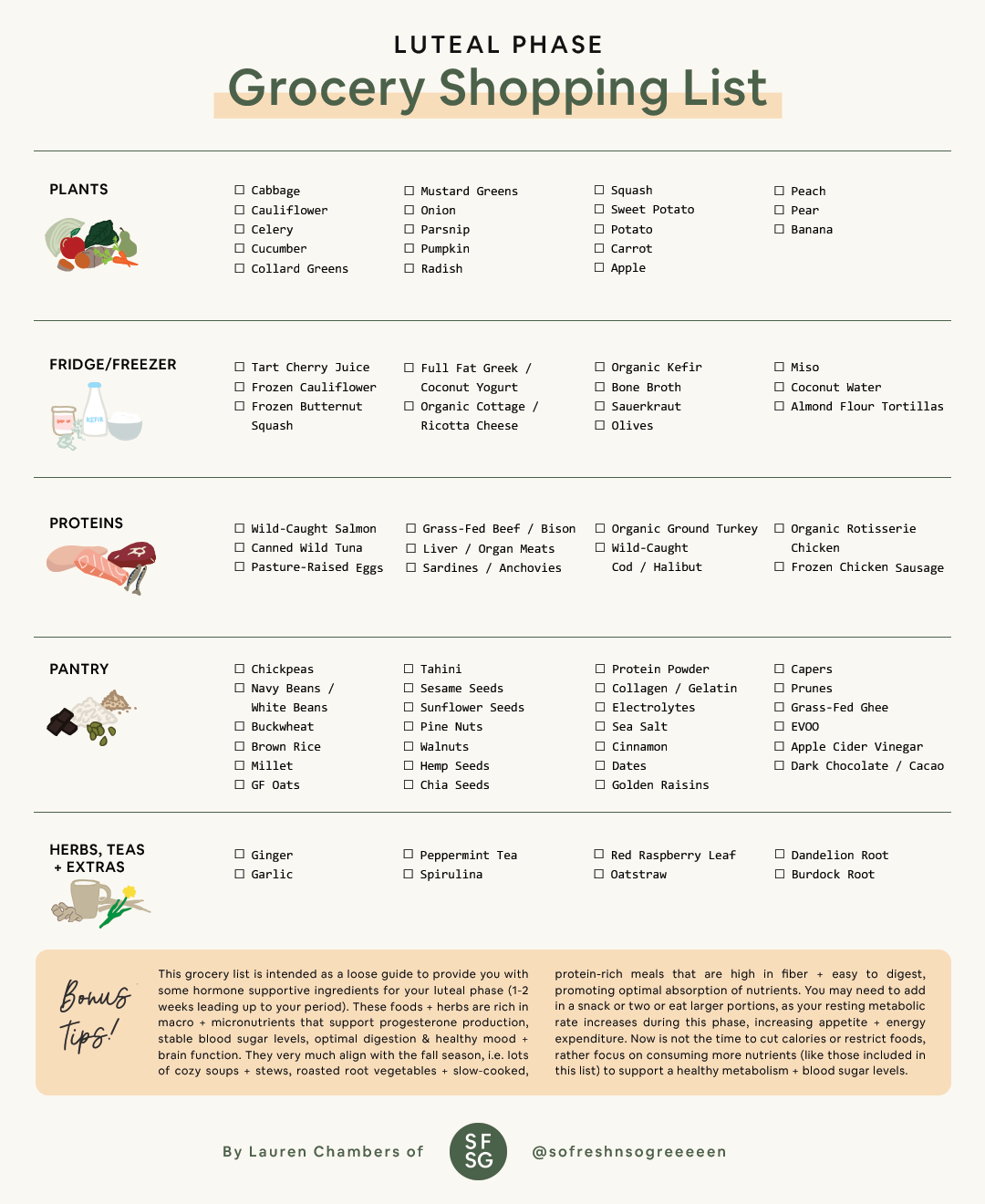
If you loved that...

01.
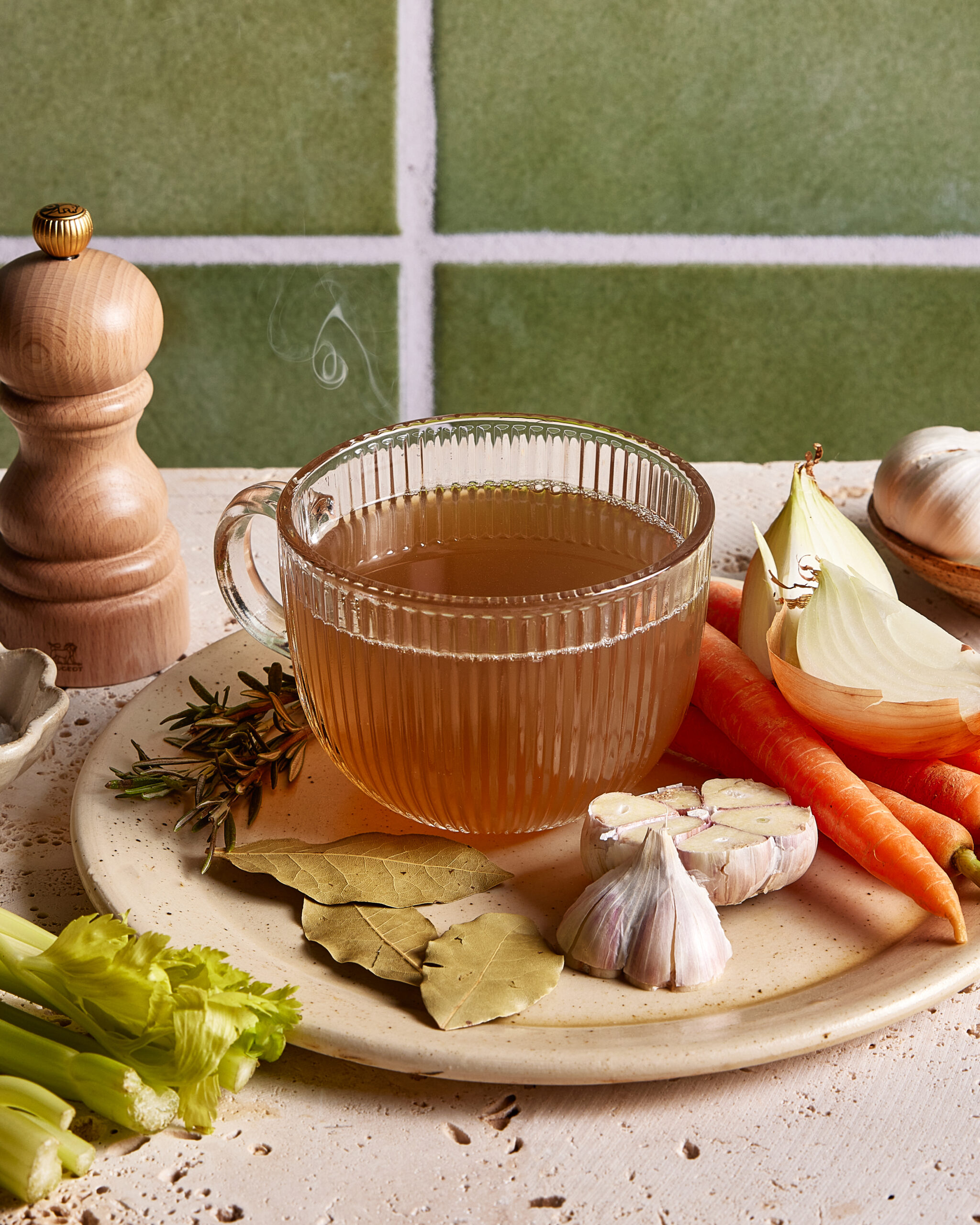
02.
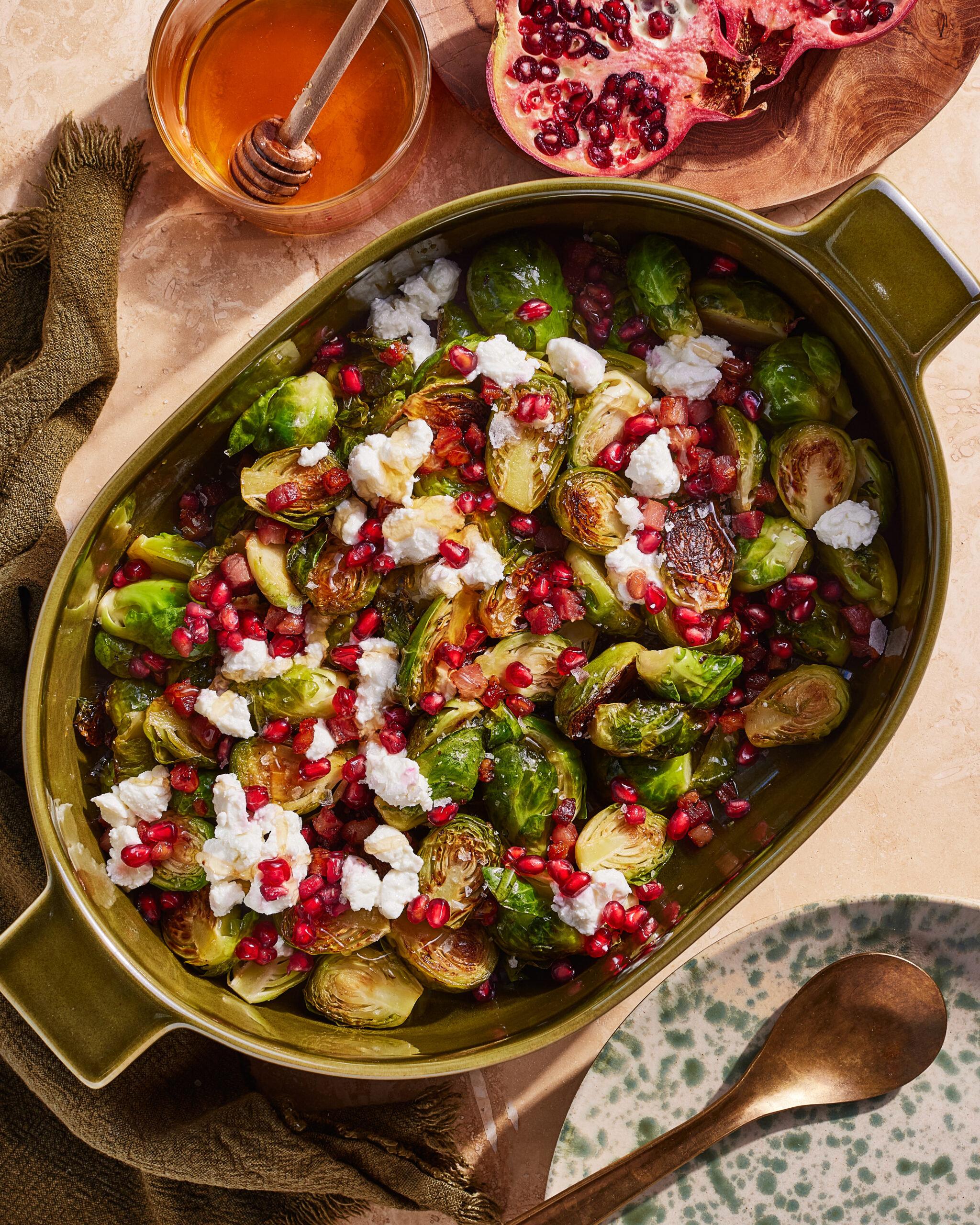
03.
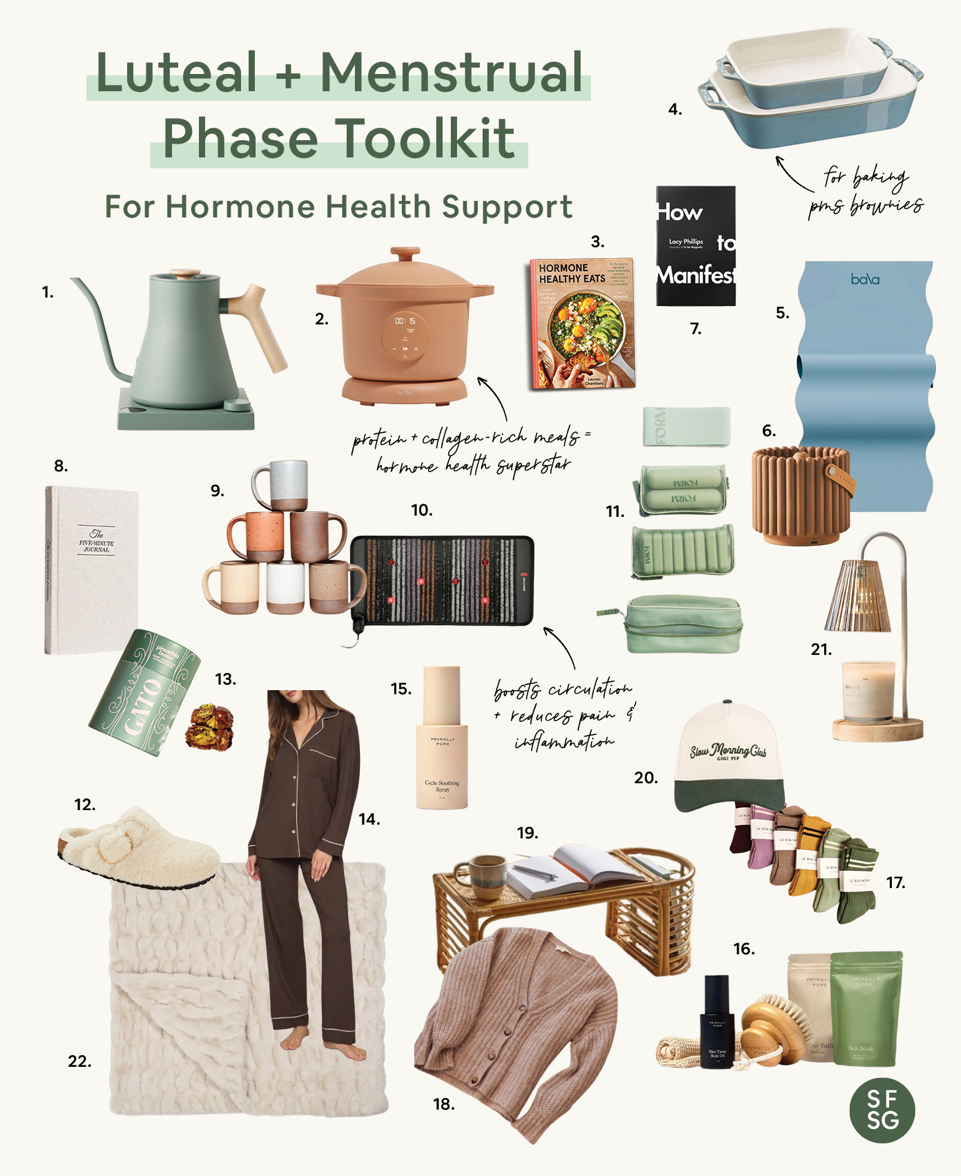
04.
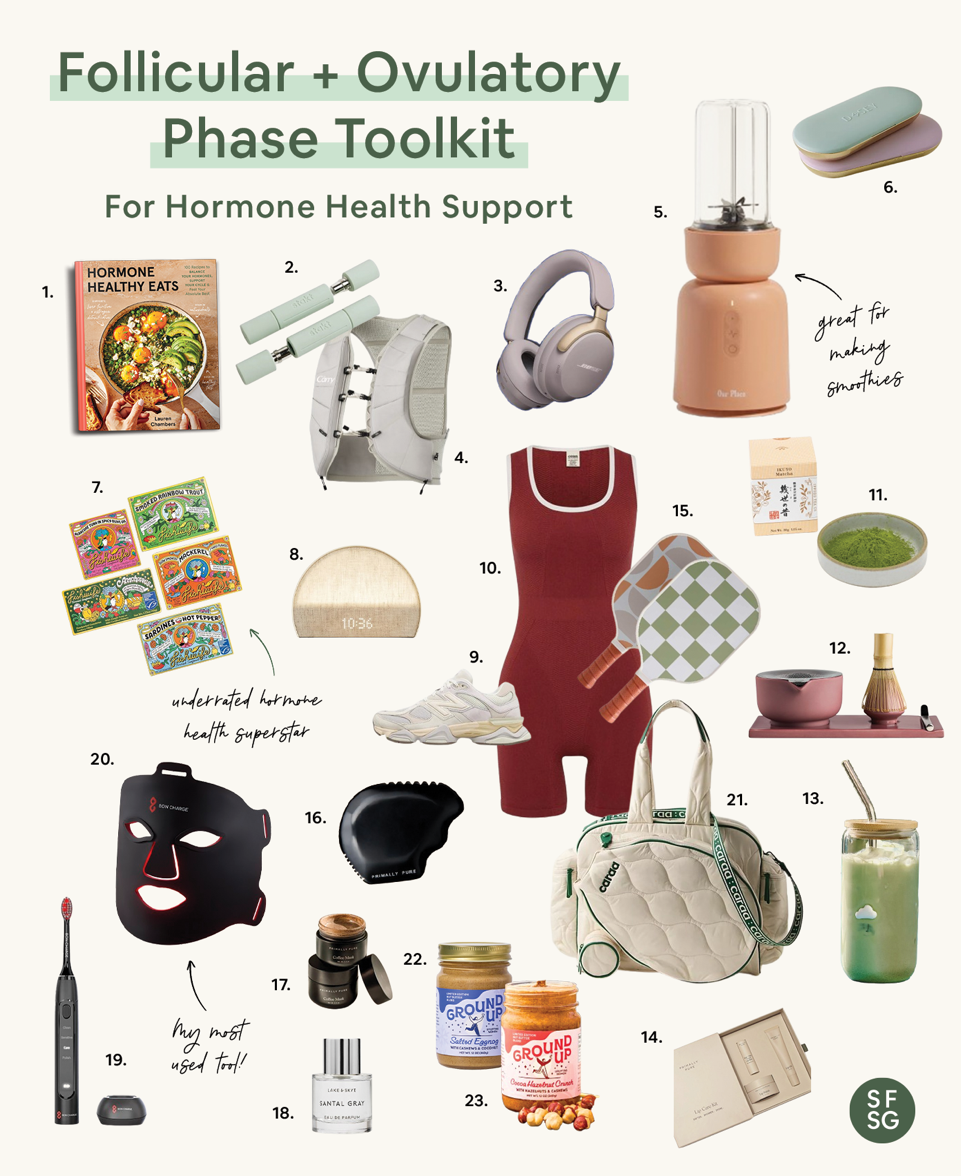
05.
hey!
Keep Browsing
Site
Keep Browsing
Site
the
about
e-books
blog
downloads
quiz
Welcome friend, I'm lauren.
I’m honored to support you on your journey to optimal hormone health + happiness. Thanks for being here babe.
